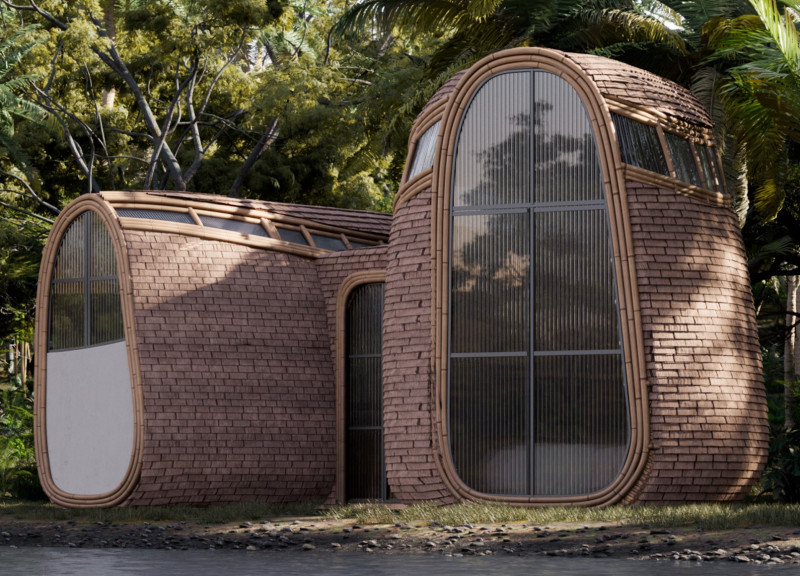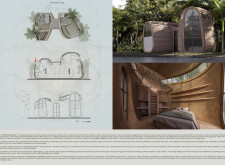5 key facts about this project
### Overview
Located in the Yucatan Peninsula of Mexico, the Seed Microhouse design applies sustainable architectural principles, drawing inspiration from the geometric structure of the Seed of Life. Intended to address the growing demand for eco-friendly living, the microhome integrates with the tropical ecosystem while facilitating both residential and recreational use within a compact footprint. Its design fosters community interaction and promotes a connection with nature.
### Spatial Organization and Functionality
The microhouse features an innovative configuration, incorporating interlocking dome structures that serve distinct functions: living, sleeping, and utility spaces. The strategic compactness of the overall footprint, measuring only 25 square meters, encourages efficient spatial flow and versatility, accommodating multifaceted uses while allowing for functional segregation. This organization nurtures community engagement and interaction among occupants.
### Material Selection and Sustainability
The design emphasizes sustainability through the selection of environmentally friendly materials, such as bamboo for its structural framework, notable for its strength and rapid renewability. Complementary materials, including natural wood for interior finishes and large glass openings, are strategically incorporated to maximize natural light and facilitate ventilation, thereby reducing energy consumption. By prioritizing local and renewable resources, the project enhances durability while minimizing its carbon footprint and integrating harmoniously with the local landscape.



















































